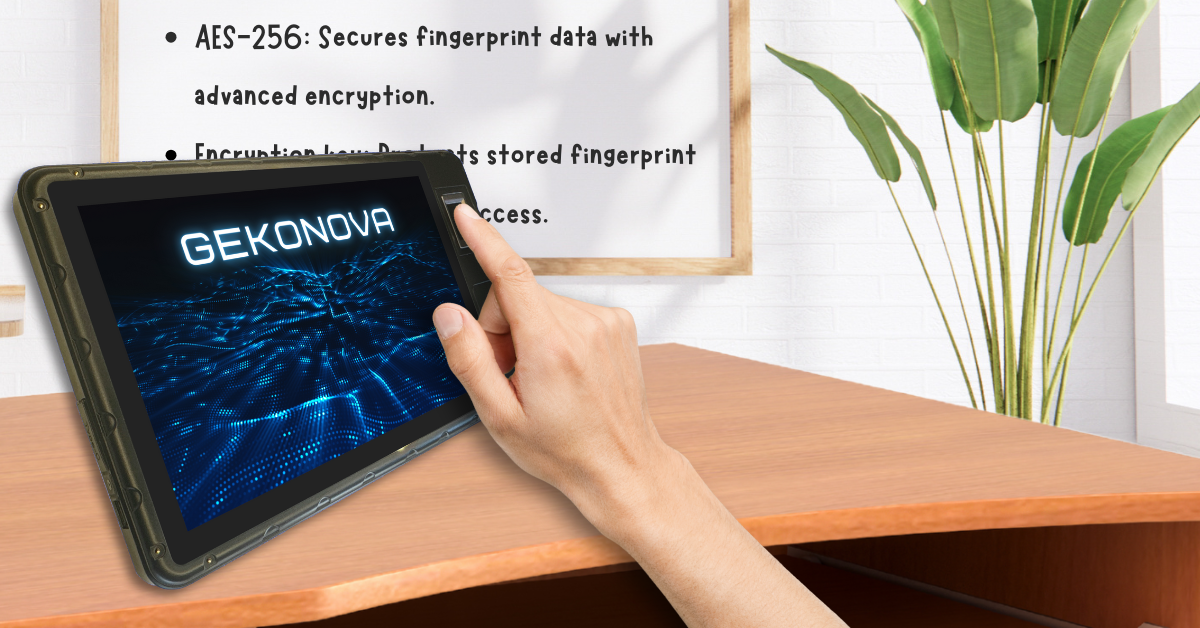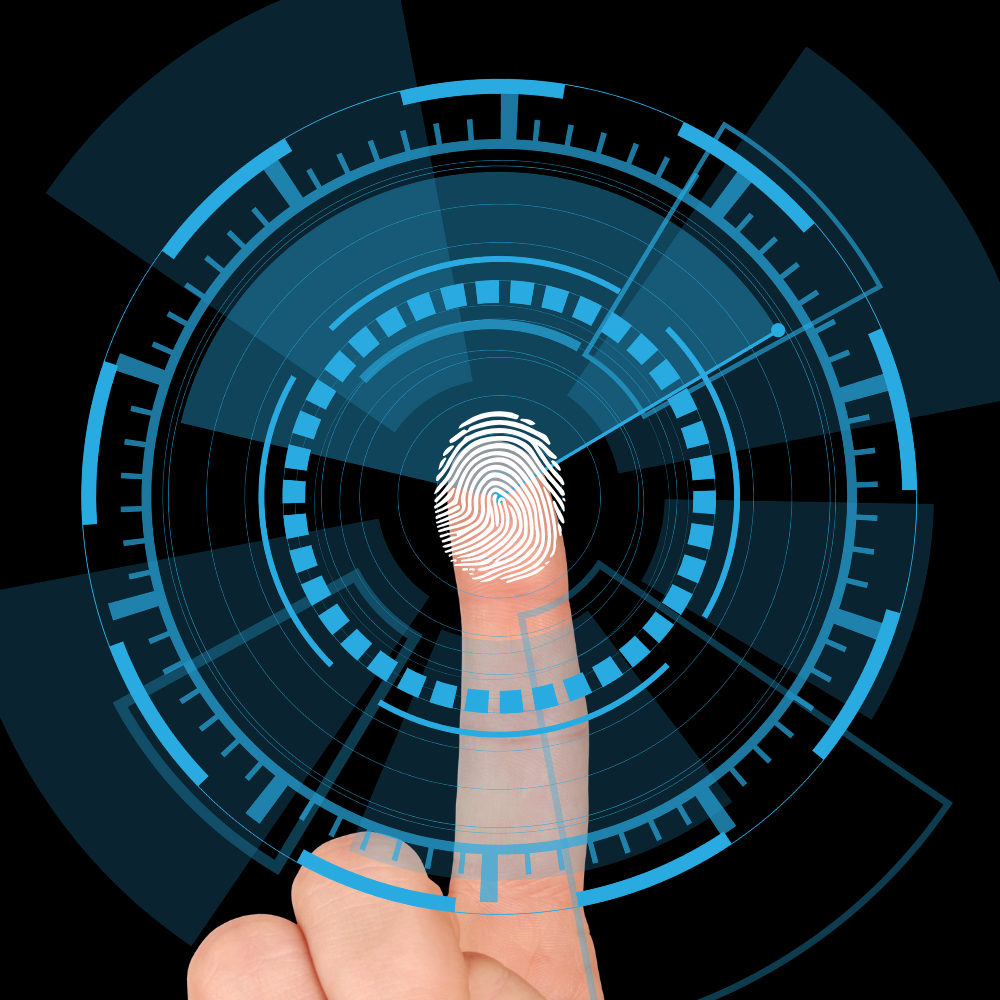Categories
The first time I unlocked my smartphone with a fingerprint scanner, it felt like living in a sci-fi movie. A single touch, and I was granted access! But that moment sparked my curiosity: how does this small sensor recognize me?
In 2025, fingerprint scanner technology is everywhere—securing phones, offices, and even payments. Let’s dive into the science, history, and future of this remarkable technology that blends biology, engineering, and computing. By the end, you’ll see why it’s so much more than a simple tap!

Fingerprint scanner technology works by reading the unique patterns on your fingertip—those swirling ridges, loops, and arches known as minutiae. No two people share the same fingerprint, making it a perfect tool for identity verification. Think of it as a digital gatekeeper, checking your “fingerprint pass” before letting you through.
When you press your finger on a scanner, a complex process unfolds in seconds. The sensor captures your fingerprint’s unique features using specialized hardware. This data is transformed into a digital template—a mathematical code based on the patterns of your ridges and valleys, not a direct image of your print. This is key for privacy, as the template can’t be reverse-engineered into your actual fingerprint.
The system then compares this template to a stored database of authorized prints using a matching algorithm. At Gekonova, our technology completes this process in milliseconds, ensuring a smooth experience. If the templates match, access is granted; if not, you’re locked out. It’s fast, secure, and incredibly sophisticated under the hood!
Fingerprint scanner technology comes in several forms, each with unique methods and strengths tailored to different needs. Let’s explore the main types and how they operate.
Optical scanners are the pioneers of fingerprint scanner technology, functioning like miniature cameras. They shine light on your finger and use a sensor—similar to those in digital cameras—to capture an image of your fingerprint’s ridges and valleys. The light reflects differently off ridges than valleys, creating a high-contrast map.
While cost-effective, optical scanners can falter with wet or dirty fingers, which distort the image. A TechRadar article points out they’re less secure, as high-quality fake prints can occasionally trick them. Still, they remain popular for budget-friendly applications.
Capacitive scanners dominate modern smartphones, and I love their responsiveness. These fingerprint sensors use tiny capacitors to detect the electrical differences between your fingerprint’s ridges (which touch the sensor) and valleys (which don’t). This creates a precise digital map of your print.
They’re more secure than optical scanners, as fake prints struggle to mimic electrical properties. They also handle slightly smudged fingers better, perfect for everyday use—like after I’ve been baking! A GSMArena article highlights their reliability in consumer devices.
Thermal scanners take a novel approach, using heat to map your fingerprint. When your finger touches the scanner, a thermal sensor detects the temperature differences between ridges (which transfer more heat) and valleys (which trap air and transfer less). This creates a thermal image of your print.
Thermal scanners shine in challenging conditions, as dirt or moisture has minimal impact on heat transfer. They’re less common but ideal for industrial settings where fingers might be grimy.
Ultrasonic scanners are the future of fingerprint scanner technology, and they’re mind-blowing. They emit high-frequency sound waves that bounce off your finger’s ridges and valleys, creating a detailed 3D map—even capturing subsurface details. A CNET article praises their ability to work through oil, dirt, or thin gloves, making them perfect for harsh environments.
Their security is top-notch, as fake prints can’t replicate subsurface patterns. While still emerging, ultrasonic scanners are set to revolutionize biometrics.
Fingerprint scanner technology has evolved from inky records to sleek digital systems. Here’s a timeline split into two eras: early fingerprint identification and modern biometric advancements.
1880s – Scientific Foundations: Sir Edward Henry developed a system for classifying fingerprints, proving their uniqueness. This became the basis for forensic fingerprinting, with police adopting ink-based methods.
1930s – Institutional Adoption: The FBI formalized fingerprint records, building a massive manual database for criminal identification.
1970s – Digital Dawn: Early computers enabled the FBI to digitize fingerprints, laying the groundwork for automated systems like the Automated Fingerprint Identification System (AFIS).
1980s – Automation Advances: AFIS systems began automating fingerprint matching, slashing processing times for law enforcement.
1990s – Optical Scanners Debut: The first optical scanners appeared, used in secure facilities. They were bulky but marked a shift to digital biometrics.
2000s – Capacitive Scanners Rise: Smaller, more secure capacitive scanners enabled integration into laptops and early smartphones.
2013 – Biometrics for All: Apple’s Touch ID on the iPhone 5S popularized fingerprint scanner technology, making it a consumer staple.
Early 2020s – Ultrasonic Era: Ultrasonic scanners gained traction, offering unmatched accuracy and security.
2025 – AI-Powered Precision: AI algorithms have reduced false acceptance rates to below 0.0005%, making fingerprint scanner technology more reliable than ever.
The magic of fingerprint scanner technology isn’t just in the hardware—it’s in the algorithms that quietly orchestrate the entire process. These computational powerhouses transform raw fingerprint data into secure, verifiable identities with remarkable speed and precision. Let’s dive deeper into the two critical phases of this process: capturing and storing the fingerprint template, and matching it during verification.
The journey begins when you enroll your fingerprint by placing it on a scanner. Whether it’s an optical, capacitive, or ultrasonic sensor, the scanner captures a high-resolution representation of your fingerprint’s ridges, valleys, and unique features. But raw data alone isn’t enough—algorithms step in to refine and secure it for storage.
The first task is preprocessing, which ensures the captured data is clear and usable. Scanners often deal with imperfect inputs—think smudges, slight rotations, or partial prints. To tackle this, algorithms apply a series of enhancements:

Next, the algorithm identifies the fingerprint’s minutiae—distinctive points like ridge endings (where a ridge stops), bifurcations (where a ridge splits), and deltas (triangular junctions). These are the building blocks of your fingerprint’s uniqueness. The extraction process involves:
This results in a feature set—a collection of 50–100 minutiae points, depending on the scanner’s resolution and the finger’s size.
The feature set is then encoded into a digital template, a compact mathematical representation of the minutiae. This isn’t a visual image of your fingerprint but a coded dataset of coordinates, angles, and relationships between points. For example, the algorithm might store the distance and angle between a ridge ending and a nearby bifurcation.
To safeguard privacy, the template is encrypted using robust standards like AES 256-bit encryption. This ensures that even if a database is compromised, the template is unreadable without the decryption key. Importantly, the template is designed to be non-reversible—you can’t reconstruct the original fingerprint from it, addressing a key privacy concern. Gekonova employs additional cryptographic techniques, like secure hashing, to further protect stored data.
The final template is small (often under 1 KB), making it efficient for storage and fast for retrieval. It’s saved in a secure database, ready for future verification.
When you scan your finger to unlock a device or access a system, the verification process kicks in. The scanner captures a new fingerprint, processes it into a template, and compares it to the stored one. This phase is where the algorithm’s speed and accuracy shine, delivering results in milliseconds.
The verification scan follows the same preprocessing and minutiae extraction steps as enrollment. The scanner captures a fresh image, applies noise reduction, contrast enhancement, and ridge thinning, then extracts a new set of minutiae points. This ensures consistency between the enrollment and verification templates, even if the finger is slightly rotated or pressed differently.
Machine learning plays a growing role here. Modern algorithms, like those used by Gekonova, adapt to variations in fingerprint quality—such as a small cut, dry skin, or slight distortion from pressure. Neural networks analyze patterns in the data, improving the algorithm’s ability to extract reliable minutiae under diverse conditions.
The system retrieves the enrolled template from its secure database, decrypting it if necessary. This step is optimized for speed, as delays could frustrate users. Databases are often indexed to allow rapid lookup, and Gekonova’s systems use secure enclaves—isolated hardware environments—to protect templates during retrieval.
The core of verification is the matching algorithm, which compares the new template to the stored one. The most common approach is minutiae-based matching, which evaluates the similarity between the two sets of minutiae points. Here’s how it works:
Beyond basic minutiae matching, modern algorithms incorporate advanced techniques to boost accuracy:
Fingerprint scanner technology is incredible, but it’s not perfect. Here are the main challenges and how we can address them to keep improving.
Challenge: Optical scanners often fail with dirty or wet fingers, leading to frustrating rejections.
Solution: Ultrasonic scanners, which penetrate surface contaminants, offer a reliable fix for messy environments.
Challenge: Cuts, scars, or worn ridges (common in older adults or manual workers) can disrupt scans, causing false denials.
Solution: Ultrasonic scanners capture subsurface details, bypassing surface damage for consistent results.
Challenge: Optical scanners can be fooled by sophisticated fake prints, posing risks in sensitive settings.
Solution: Capacitive or ultrasonic scanners, which detect electrical or 3D features, are far harder to trick. Regular algorithm updates also bolster defenses.
Challenge: A breach of fingerprint template databases could compromise user privacy, even with encryption.
Solution: Decentralized storage, advanced encryption, and routine security audits minimize risks, ensuring data stays safe.
Fingerprint scanner technology feels like a small miracle every time I use it, but understanding its inner workings makes it even more awe-inspiring. From sensors that map your unique print to algorithms that verify it in a flash, it’s a masterpiece of innovation. Yes, challenges remain, but the progress in 2025 fills me with excitement for what’s next. Whether you’re unlocking your device or clocking in at work, fingerprint scanners are transforming our world—making it safer, faster, and just a touch more futuristic. So, next time you scan your finger, pause to marvel at the tech behind the touch!